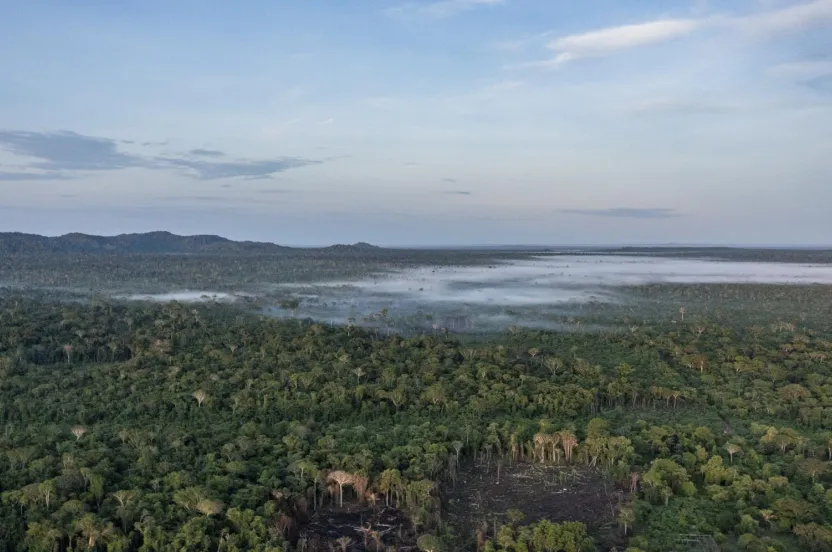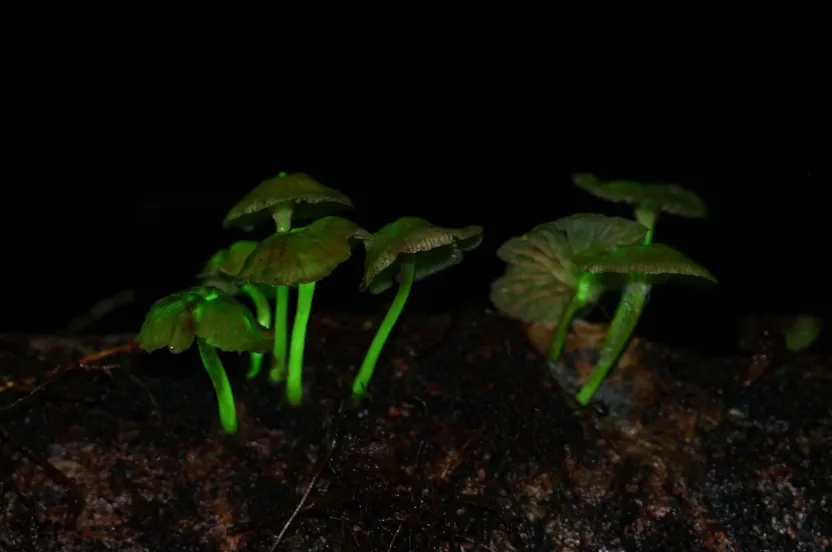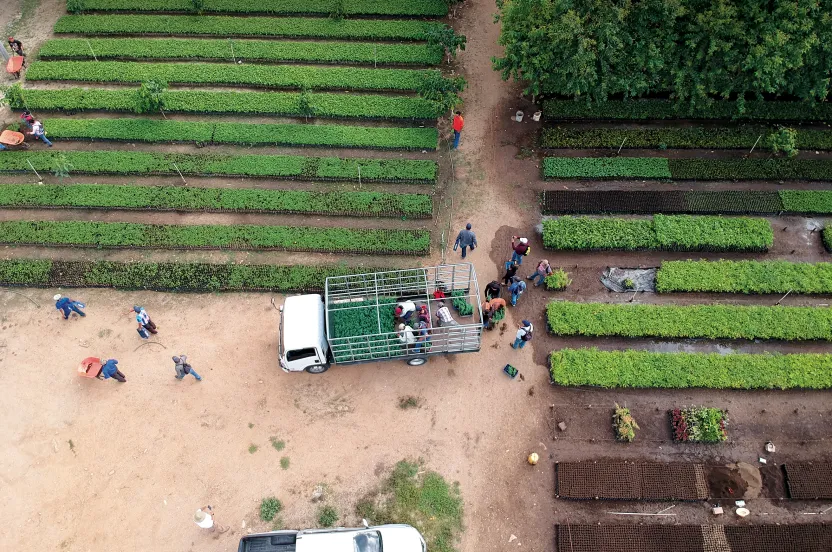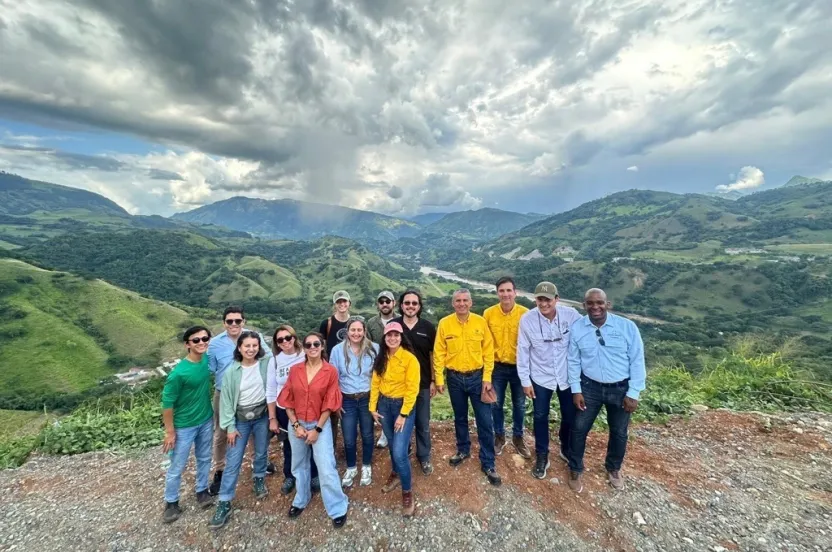Give before midnight on July 31 to double your impact where trees need us most. LEARN MORE
Wait, Killer Whales Need Trees?
The connection between southern resident orcas and forests is closer than you think.
May 23, 2024
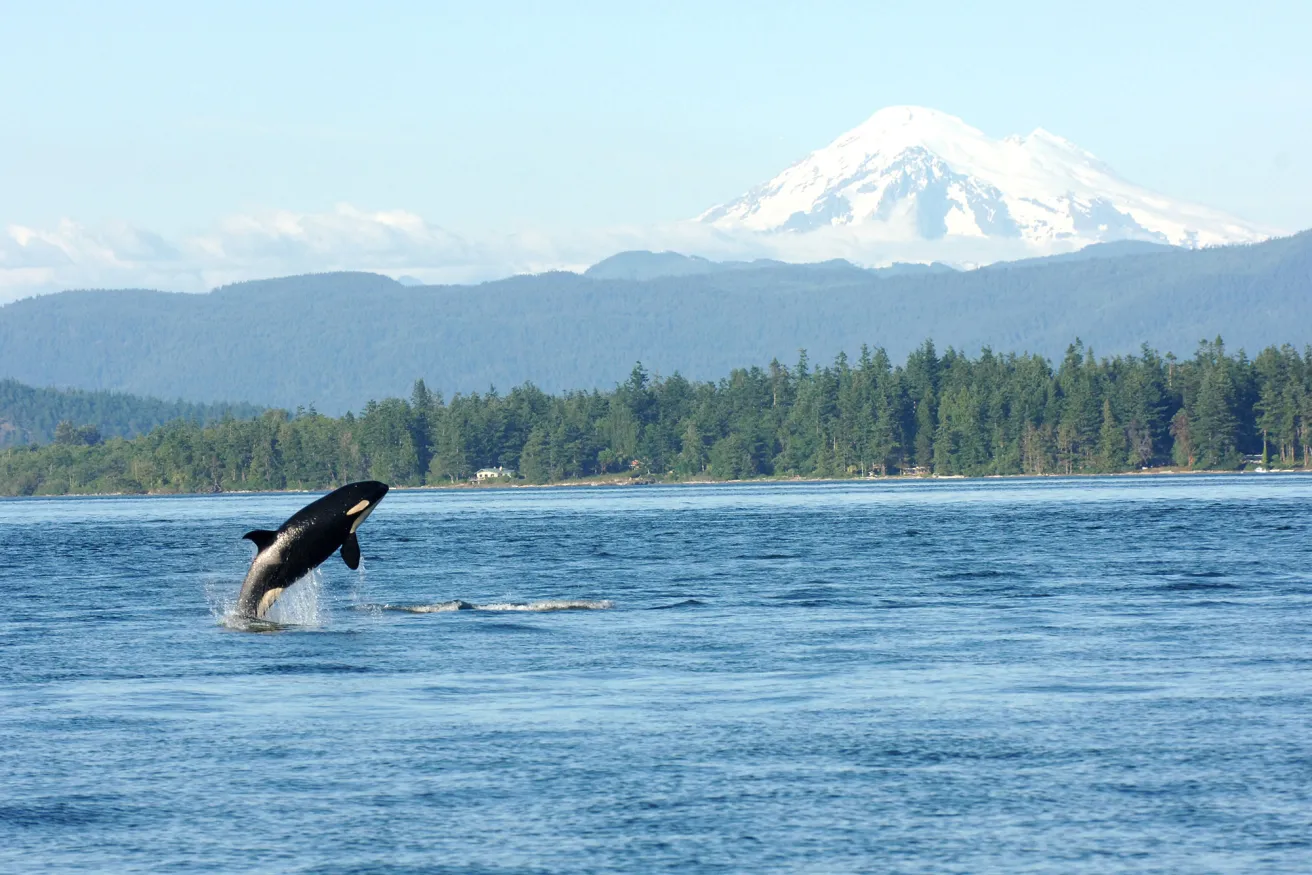
The endangered southern resident orcas are in trouble. Their population has dwindled to 73.
Their food source is scarce. They need help. That’s why efforts are underway to support this mammal, and one important part of the plan is tree planting. Yes, you read that right — trees.
How is it that an ocean-dwelling animal relies on trees for survival? Well, trees shade the rivers and streams of the Pacific Northwest. Chinook salmon rely on those cool and clean waterways for spawning. The young salmon then make their way back to the ocean, where they become lunch for the orcas (and other hungry mammals).
Essentially, trees ensure these killer whales get a regular meal.
Who are these southern residents, and why are they struggling?
Southern resident orcas make their home in the Pacific Ocean and the Salish Sea. They’re found primarily in the waters off the coast of British Columbia, Washington, and Oregon, but their range stretches from the southern tip of Alaska to as far south as Monterey Bay, California. And while populations of some types of orcas have improved since the Marine Mammal Protection Act of 1972, the southern resident numbers have not rallied.
The reasons for this population’s struggles are well-known:
- Habitat disturbance – “They’re living in a more urban-influenced environment than many of the other populations further north,” says Mike Ford, senior scientist at NOAA’s Northwest Fishery Science Center.
- Pollutants – This is directly tied to increased boat traffic and the urban environment.
- Inbreeding – With such a small population of southern residents, this has become an issue.
- Lack of prey – A big part of their diet is Chinook salmon, many populations of which are also threatened and endangered.
Orcas are voracious eaters, and southern residents feed on salmon in coastal areas, including at the mouth of larger waterways like the Columbia River. “A big part of their diet is Chinook salmon,” notes Ford. “The whole population will eat 200,000 to 300,000 Chinook salmon per year.”
That’s a lot of fish. But unfortunately, Chinook salmon numbers sharply declined a century ago and have not rebounded enough. The smaller salmon population may even be leading to malnourishment. According to the Marine Mammal Commission, some southern resident orcas that have recently died have shown signs of poor body condition, which could be due to poor nutrition.
A food source fighting for survival
Found in both fresh and salt waters of the Pacific Northwest, Chinook salmon are a keystone species — meaning many other species within their ecosystem rely on them. These fish serve as dinner for orcas as well as bears, seals, large birds of prey, and people. They are also a clear indicator of the overall health (or impairment) of an ecosystem.
Many populations of these salmon in the Columbia River are federally threatened or endangered. The issues facing these fish are numerous, but two concerns are water temperature and water quality in the streams and rivers where the fish spawn.
Decades of deforestation, flood control measures, and irrigation have degraded waterways in this region. Record-level heat waves and wildfires have only worsened the situation. “Water quality matters for salmon — the temperature of the water and also the pollutants in the water,” explains Kas Guillozet, watersheds senior program director for Bonneville Environmental Foundation.
Without healthy riparian forests lining their banks, these rivers and streams don’t have the water filtration or shade they need to provide good freshwater habitat for the salmon to return from the ocean for spawning. “A big issue for a lot of these populations has been loss of riparian habitat. To the degree that that can be restored, or existing habitat protected, I think it’s really important,” adds Ford.
Trees for the salmon, salmon for the orcas
Tree planting is happening throughout the Pacific Northwest to restore riparian forests. In fact, the Arbor Day Foundation has turned its attention to the general American West as a priority region for planting projects. With more riverbank tree cover, fewer pollutants will make it into the water, and the shade will help keep water temperatures cooler. This is one step being taken to support Chinook salmon populations in the area.
Helping these salmon is part of a larger effort to support the orcas. “It’s important to recognize that there are a lot of issues impacting the southern resident orca. I think restoring salmon habitat through tree planting is a great and noble thing to do. It’s really important as one component of a complete recovery plan for the whales,” says Ford. A more stable food source means a healthier population of orcas.
